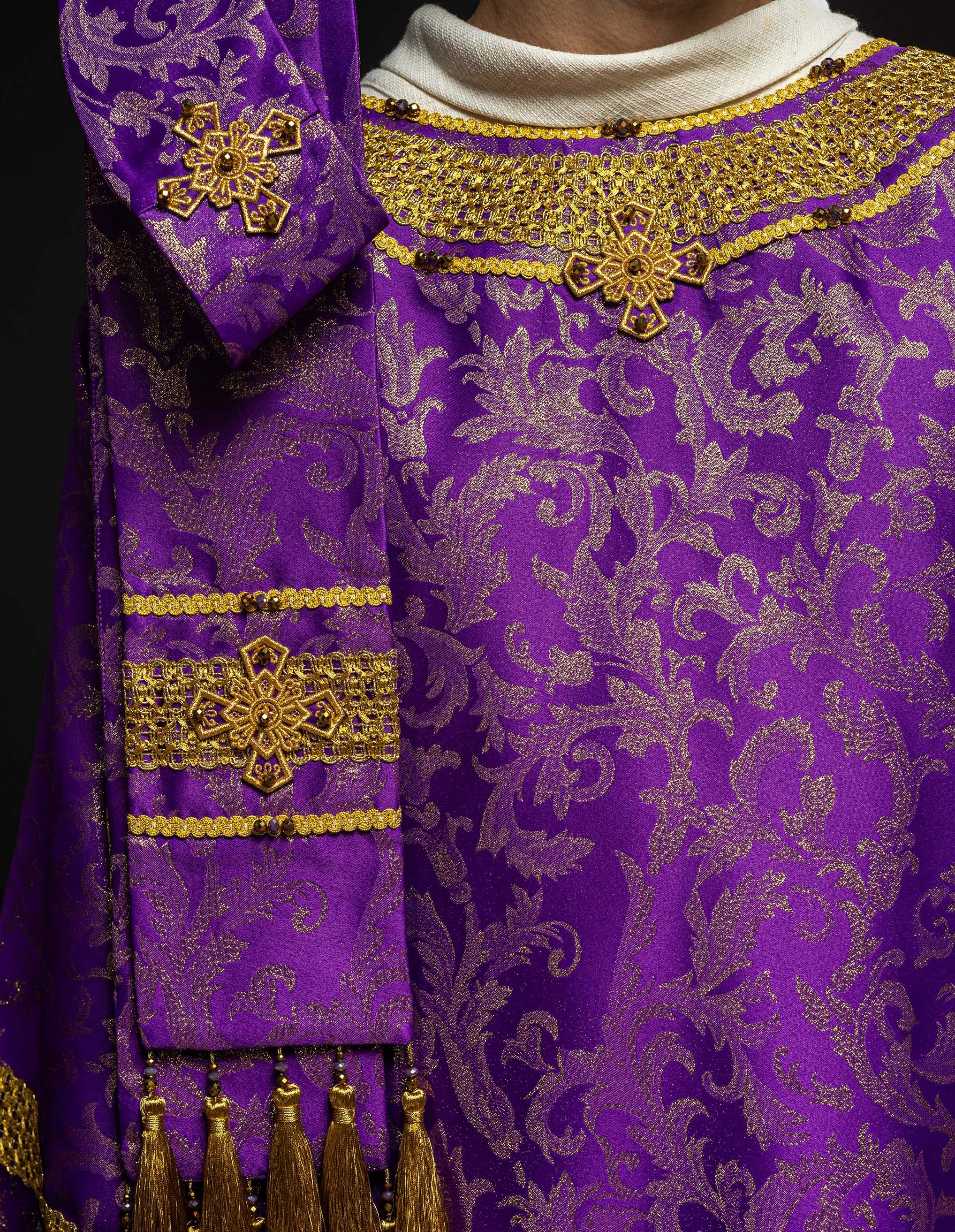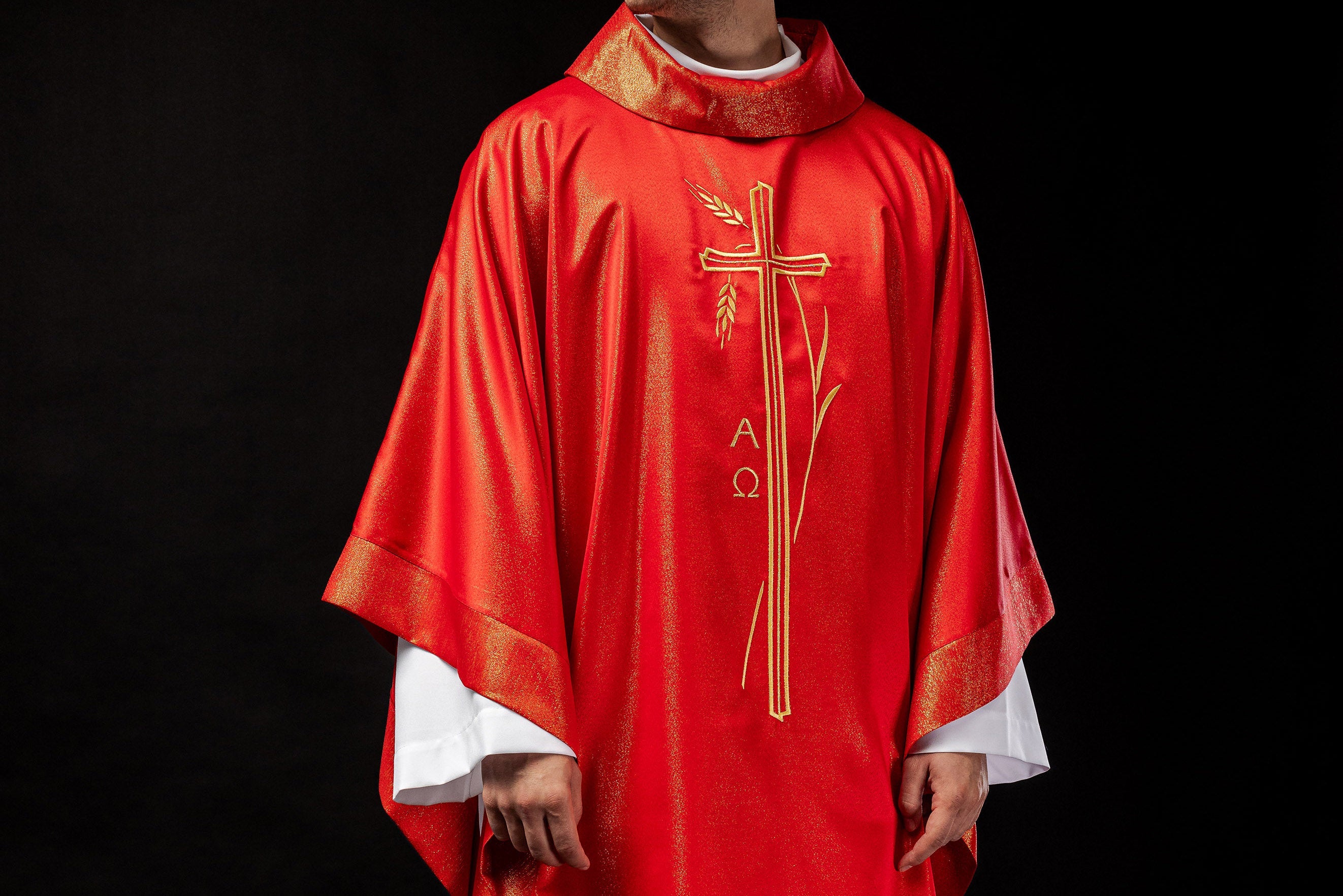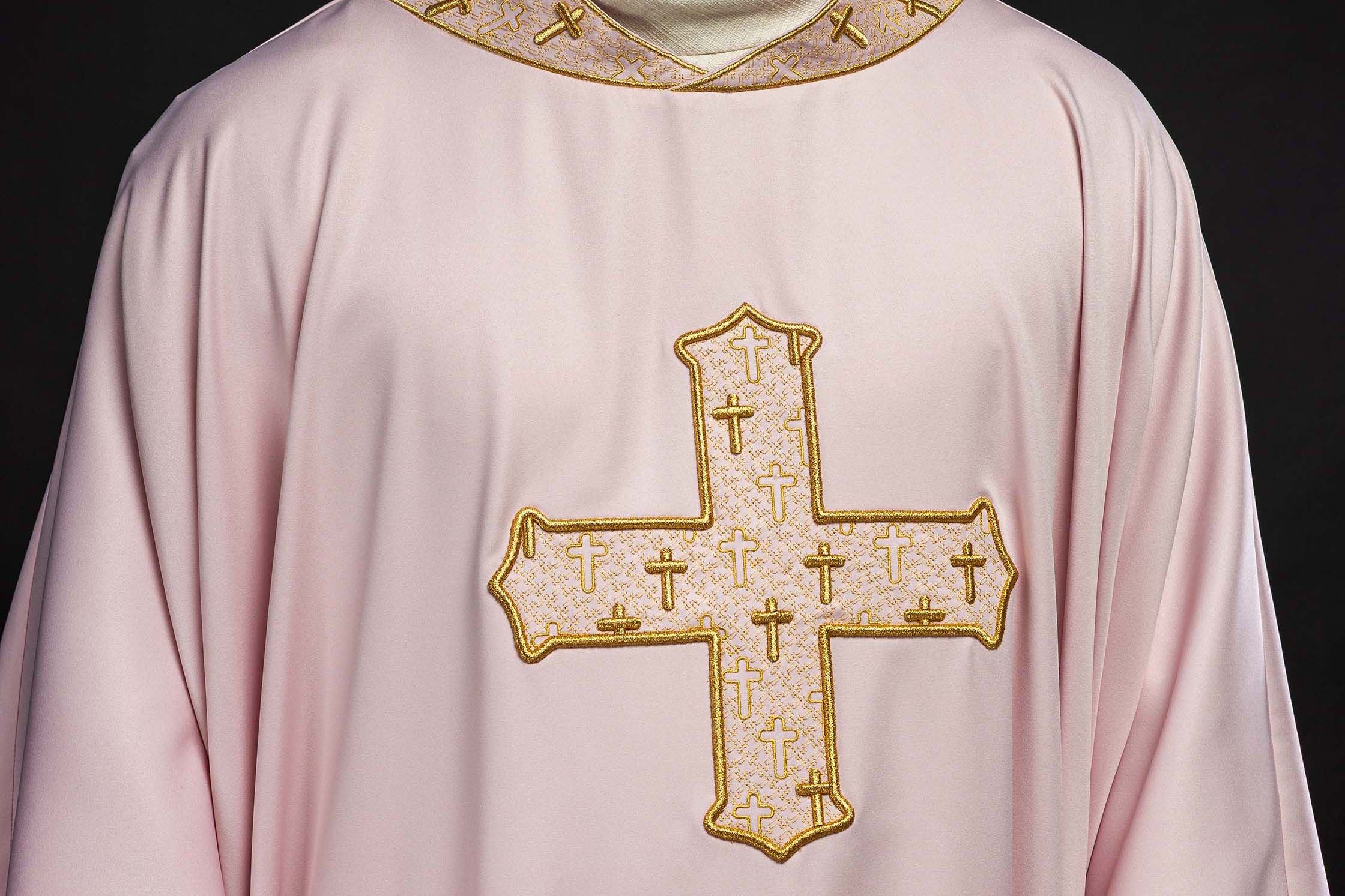
What Vestments to Wear for Lent? A Liturgical Guide
What Ornate for Lent? A Liturgical Guide
Lent is a time of deep reflection, penance, and conversion. The liturgy celebrated during this period is characterized by a specific, restrained beauty that is meant to help the faithful spiritually prepare for the Paschal Feast. A key element that emphasizes the character of the celebrations is liturgical vestments, especially the chasuble. Choosing the right chasuble for Lent is not a matter of chance or mere aesthetics – it is a conscious reference to the rich tradition of the Church and the deep symbolism that lies behind every detail.
The Symbolism of Purple – The Heart of Lent Liturgy
The primary and most recognizable liturgical color of the Lenten season is purple. Its symbolism is incredibly rich and multifaceted:
- Penance and Conversion: Purple is associated with solemnity, contrition, and the need for transformation. It is a time when the Church encourages reflection on one's own life, sacrifices, and turning away from sin.
- Waiting and Hope: Purple is also the color of waiting. It symbolizes hope for the resurrection and Christ's victory over death, which is the culmination of the Lenten and Easter season.
- Royalty and Dignity: In ancient times, purple was a color reserved for rulers and people of high social standing. In the liturgical context, it refers to the royal dignity of Christ, who prepares for His sacrifice.
- The Passion of Christ: This color also refers to the suffering and passion of Christ, emphasizing His scourging and the Way of the Cross.
According to liturgical regulations, purple is the dominant color for most of Lent, until Palm Sunday. Therefore, when looking for a chasuble for this time, you should first and foremost be guided by this color.
Chasuble for Lent – What Materials and Decorations to Choose?
When choosing a chasuble for Lent, it is worth paying attention not only to the color, but also to its workmanship and decorations, which should harmonize with the spirit of the penitential season:
What Motifs to Embroider on Lenten Chasubles?
Although purple dominates, the decorations of the chasuble can further enrich its symbolism:
- Cross: The most universal and fundamental symbol of Christianity, referring to the passion and salvation. Simple but clear crosses embroidered with gold or silver thread perfectly fit into the aesthetics of Lent.
- Paschal Lamb Motif: Symbolizes Christ as the sacrifice for the sins of the world, which is particularly relevant in the context of Lent and the Paschal mystery.
- Plant Motifs (Ears of Wheat, Grapes): Refer to the Eucharist, which is the central point of the Church's life, as well as to life, growth, and spiritual transformation.
- Motifs Related to the Passion: Although less commonly used in embroidery, subtle references to the symbols of the passion (e.g., a crown of thorns) can emphasize the character of the period.
- IHS Letters: The monogram of Christ, expressing faith and devotion.
- Marian Motifs: The Heart of Mary, images of the Mother of God – refer to Her co-suffering with Her Son.
It is important that the decorations are subdued and elegant, not overwhelming and not distracting from the main message of the liturgy. We avoid bright, extravagant patterns that may be inappropriate for the penitential season.
Materials and Cuts of Chasubles for Lent
Chasubles for Lent should be made of materials that emphasize its solemn, yet restrained character:
- Smooth and Semi-Gloss Fabrics: Classic jacquard or polyester fabrics in shades of purple are an excellent choice. They provide elegance without unnecessary splendor.
- Velvet: Although more stately, a velvet chasuble in purple can also be suitable for special occasions in Lent, such as church celebrations or priestly jubilees.
- Cuts: Both Roman chasubles (wider, more simple) and Gothic chasubles (narrower, with an elongated back and front) can be used in Lent. The choice of cut often depends on the traditions of a given diocese, parish, or the individual preferences of the clergyman. It is important that the cut is comfortable and does not restrict movement during the celebrations.
It is worth choosing chasubles made of high-quality fabrics that drape well and are durable. Attention to detail, such as precise seams and careful finishing of the embroidery, emphasizes respect for liturgical vestments.
Can Other Colors Be Used in Lent?
According to the traditional liturgical calendar, the dominant color of Lent is purple. However, there are some exceptions:
- Laetare Sunday (Fourth Sunday of Lent): On this day, the use of the color rose is permitted. It symbolizes joy for the coming Resurrection and is a kind of "light at the end of the tunnel" for the faithful experiencing the penitential season. A rose chasuble for Laetare Sunday is a pleasant variation and emphasizes the breakthrough character of this Sunday.
- Solemnities and Feasts: If solemnities or liturgical feasts with their own assigned color fall during Lent (e.g., the Feast of the Annunciation – white, martyrdom – red), a chasuble in that color can be used. However, most parishes keep purple as the dominant color throughout Lent, except for Laetare Sunday.
- White/Gold: Some sources state that a white or gold chasuble can be used in combination with purple, e.g., as a decorative element, but this is rarely practiced and usually limited to special circumstances. It is always worth following local customs and liturgical ordinances.
Why Invest in a Good Quality Lenten Chasuble?
The chasuble is not only an element of priestly clothing, but above all a liturgical tool that helps the faithful experience the mysteries of faith. Investing in a good quality chasuble for Lent has many advantages:
- Emphasis on the Solemnity and Depth of the Period: A well-chosen chasuble, maintained in symbolic colors and with elegant but subdued embroidery, helps to create the appropriate atmosphere in the church.
- Durability and Strength: High-quality materials and careful workmanship guarantee that the chasuble will last for many years, maintaining its appearance even with frequent use.
- Comfort of the Priest: A well-cut and made chasuble ensures comfort during long liturgical celebrations, which is extremely important for the celebrant of the Eucharist.
- Expression of Respect for the Liturgy and Sacred Objects: Attention to the aesthetics of liturgical vestments is an expression of respect for God and sacred rites.
Where to Look for Chasubles for Lent?
When looking for a suitable chasuble for Lent, it is worth turning to proven manufacturers and distributors offering high-quality liturgical vestments. Companies such as HAFTINA TEXTILE GROUP SP. Z O. O. (haftinausa.com) offer a wide selection of chasubles in various colors, cuts, and with a wealth of embroidery, which will certainly meet the expectations of even the most demanding customers. The offered products are characterized by attention to detail, the selection of the best materials, and compliance with liturgical tradition.
Summary
Choosing a chasuble for Lent is an important decision that affects the character of liturgical celebrations during this special time. The dominant color is purple, symbolizing penance, conversion, and expectation. The embroidery should be subdued and refer to fundamental Christian symbols, such as the cross or the Paschal Lamb. By choosing purple chasubles, and rose ones for Laetare Sunday, clergy and parish communities can fully emphasize the deep spiritual dimension of Lent, preparing for the joyful celebration of the Lord's Resurrection. If you are looking for a unique, symbolic, and carefully made chasuble for Lent that emphasizes the importance of this time, we invite you to familiarize yourself with the offer at haftinausa.com, where you will find a wide selection of the highest quality liturgical vestments.
```




